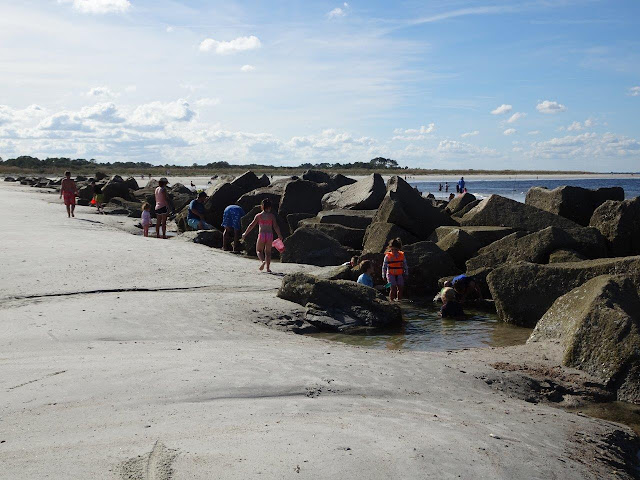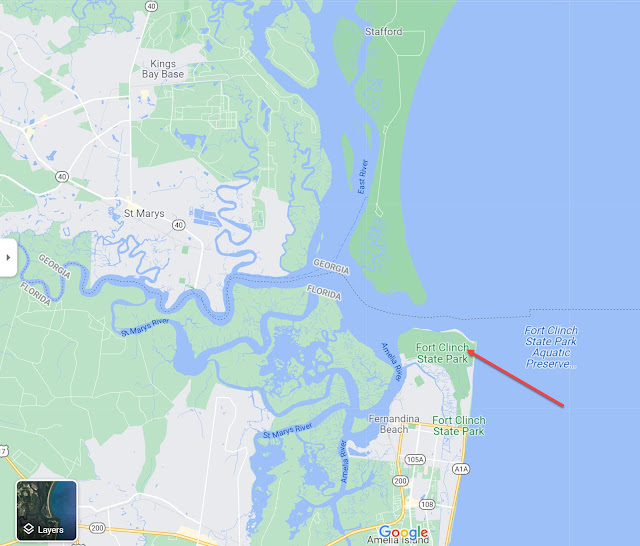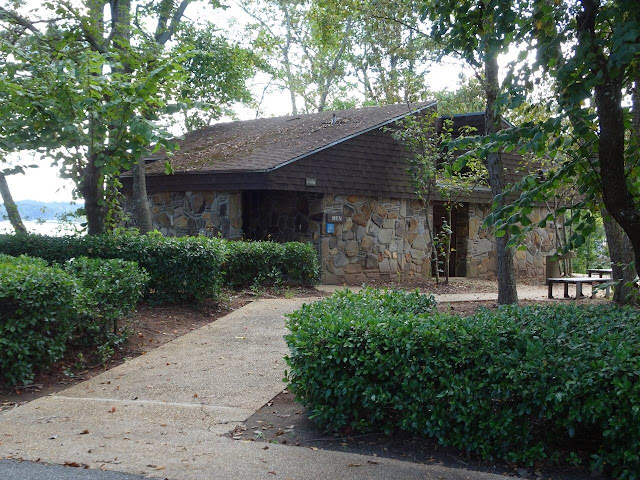As I said in the last post, this is one of my favorite campgrounds in northern Florida because it is so close to the beach. What is also important is that the beach is large and never crowded.
It is just a matter of just a few feet to the boardwalk over the dunes to the beach.
You can look back and see the RVs camped close by.
This photo was taken just before Hurricane Matthew in October 2016. Notice the pier in the distance. The area by the pier is the day use are of the state park and was a very popular place for fishing.
And this photo was taken today. No pier, because it got knocked down during the hurricane, and they are still considering whether to rebuild or not.
And this is how the pier looked in 2016. It was narrow but very, very long. Its base also formed a breakwall for the entrance to the St. Mary's river.
Now, it is just a sad pile of rocks and cement that used to hold up the metal fishing pier.
It still acts as a breakwall, but only a few adventurous souls can climb on the rocks and get out to use it for fishing.
This is looking south along the beach to the commercial area in the distance that is outside of the state park boundaries. Huge beach because it was low tide when I took these photos.
Because the tide was out, there were a lot of "toddler" pools of water along the base of the pier foundations. The water was only about a foot deep, which made it a great place for babies and very young kids.
Looking north to the campground past some people shore fishing.
Shrimp boats fishing in the distance. Had to use my telephoto lens because they were so far out. When the arms are down, the nets are in the water. When the nets are full, they pull up the arms and empty the shrimp into their holds. Can't see them, but there are hoards of seagulls hanging around the boats.
The campground is only about 1,200 feet down the beach, but it was a substantial walk for me.
This is a very young seagull (laughing gull, I think, because of black legs and black beak on adult in the next photo). Gulls do not fully mature until they are about four-five years old, and the darker the coloring, the younger the bird. This one was probably hatched only a few months ago.
If you look around when you see a very young seagull, you will see parents nearby. They let the youngster get his or her own food, but they keep an eye on it for a year or so.
























































